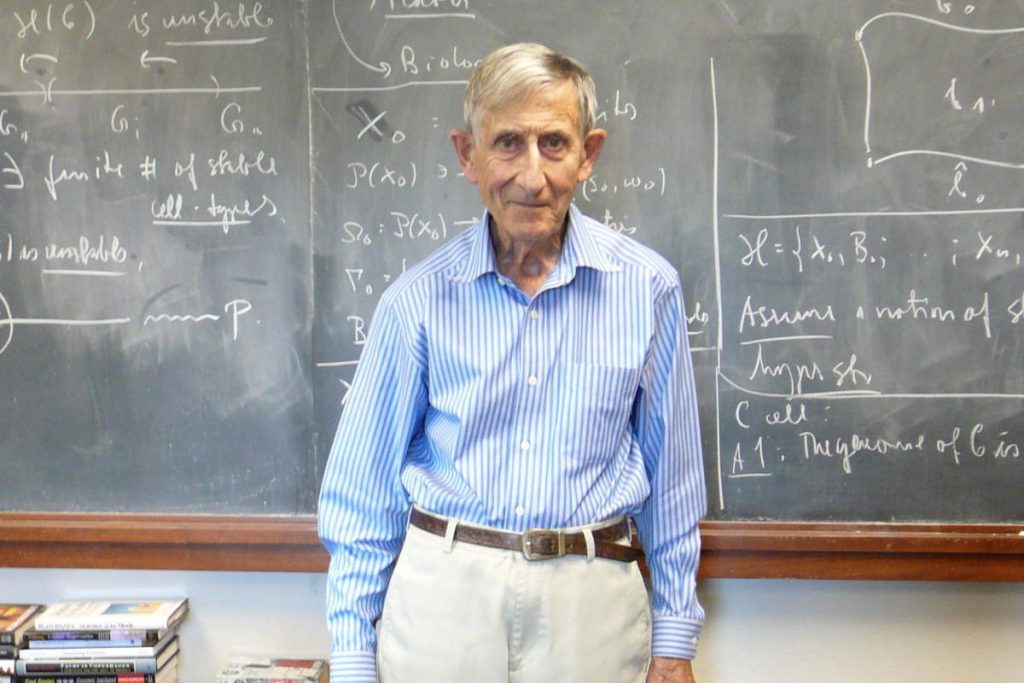Freeman Dyson, the English-born American theoretical physicist, and mathematician who imagined a hypothetical alien megastructure called “Dyson Sphere” died on February 28, 2020. Freeman was 96 years old.
Freeman Dyson, the legendary physicist, mathematician, and big thinker known for his work in quantum electrodynamics, solid-state physics, astronomy, and nuclear engineering died today at age 96 at a hospital near Princeton, New Jersey after a fall earlier this week.
Dyson originated several concepts that bear his name but probably the most famous one is the Dyson Sphere, a thought experiment that attempts to explain how a space-faring civilization (probably a Kardashev Type II civilization) would meet its energy requirements with a hypothetical megastructure that completely encompasses a star and captures a large percentage of its power output.
Freeman Dyson

“Life begins at 55, the age at which I published my first book.”
Freeman Dyson
A great figure in 20th-century physics, Freeman John Dyson FRS See Notes 1 (15 December 1923 – 28 February 2020) was born on 15 December 1923, at Crowthorne in Berkshire, England.
He moved to the United States in 1947 and spent most of his life as a professor or professor emeritus at the Princeton University Institute for Advanced Study.
He was known for his work in quantum electrodynamics, solid-state physics, astronomy, and nuclear engineering.
Freeman Dyson originated several concepts that bear his name, such as:
- Dyson’s transform, a fundamental technique in additive number theory
- The Dyson tree, a hypothetical genetically-engineered plant capable of growing in a comet
- The Dyson series, a perturbative series where each term is represented by Feynman diagrams
- The famous Dyson sphere, a thought experiment that attempts to explain how a spacefaring civilization would meet its energy requirements with a hypothetical megastructure that completely encompasses a star and captures a large percentage of its power output
- Dyson’s eternal intelligence, a means by which an immortal society of intelligent beings in an open universe could escape the prospect of the heat death of the universe by extending subjective time to infinity while expending only a finite amount of energy.
- Astrochicken, a thought experiment Dyson expounded in his book Disturbing the Universe (1979). He contemplated how humanity could build a small, self-replicating automaton that could explore space more efficiently than a manned craft could. He attributed the general idea to John von Neumann (December 28, 1903 -February 8, 1957, the Hungarian-American mathematician, physicist, computer scientist, and polymath), based on a lecture von Neumann gave in 1948 titled The General and Logical Theory of Automata. Dyson expanded on von Neumann’s automata theories and added a biological component.
Dyson’s views about Climate Change
Freeman Dyson agreed that human activities are causing global warming, and one of its main causes is the increase of greenhouse gases like carbon dioxide in the Earth’s atmosphere resulting from the burning of fossil fuels. But he believed that in many ways increased atmospheric carbon dioxide is beneficial, and that it is increasing biological growth, agricultural yields, and forests.
He argued that planting billions of trees, which genetically engineered to capture more carbon than existing trees, would solve the climate change problem.
But, Dyson’s views on global warming were harshly criticized by climate scientists. For example, James Hansen said that Dyson “…[Freeman Dyson] doesn’t know what he’s talking about. If he’s going to wander into something with major consequences for humanity and other life on the planet, then he should first do his homework – which he obviously has not done on global warming.”
Notes
- FRS stands for Fellowship of the Royal Society – an award granted by the Royal Society of London judges to individuals who have made a “substantial contribution to the improvement of natural knowledge, including mathematics, engineering science, and medical science”.
Sources
- Freeman Dyson on Wikipedia
- “Freeman Dyson, Math Genius Turned Visionary Technologist, Dies at 96” on New York Times
- Dyson sphere on Wikipedia
- “Freeman Dyson, the famed physicist, and creative force dies at 96” on CNet
- “Freeman Dyson, quantum physicist who imagined alien megastructures, has died at 96” on Live Science
- Moon Landings: All-Time List [1966-2025] - February 2, 2025
- What Is Max-Q and Why Is It Important During Rocket Launches? - January 16, 2025
- Top 10 Tallest Rockets Ever Launched [2025 Update] - January 16, 2025

